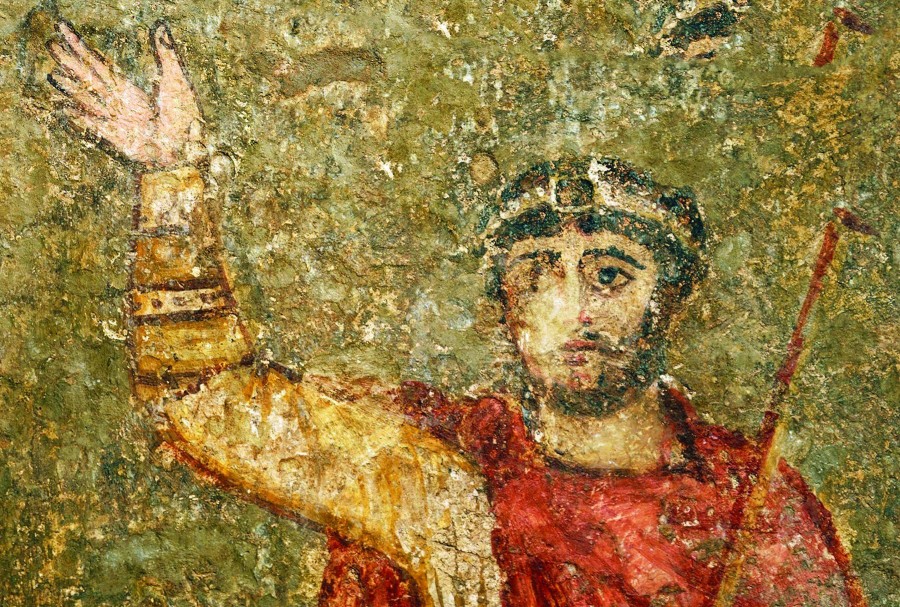In The Many Faces of Herod the Great, Adam Kolman Marshak offers a fresh and compelling historiographical account of one of the more misunderstood figures in antiquity. While he agrees that Herod does, at times, play the part of ruthless tyrant and political opportunist, Marshak contends that the monarch’s tactics of oppression and repression “cannot account for his ability to minimize or quash dissent, nor can they explain why he was so popular with his Roman patrons, his royal neighbors, and the myriad of cities dotting the eastern Mediterranean” (xxiv). Rather, Herod’s success was the byproduct of “his ability to tap into the cultural mindset of his audiences and fulfill their expectations of him and his position” (xxiv).
In Section 1 of the book (chs. 1–3), Marshak sketches the socio-political background of Herod’s rise to power in three parts: “(1) criteria for good Roman client kingship, (2) criteria for good Hellenistic monarchy, and (3) criteria for good Jewish kingship” (3). Each category corresponds to one of the cultural identities Herod sought to maintain. Two of the more salient points to arise from these chapters are, first, that the desiderata of Hellenisitic monarchs find ample points of resonance within Judean iterations of the “ideal” king (38 n. 17, 64–72) and, second, that the Hasmonean dynasty provided a model of kingship to which Herod could later appeal.
Section 2 (chs. 4–6) then traces Herod’s rise to prominence from stratēgos in Galilee to Hasmonean usurper in Judea. As Marshak aptly illustrates, time and again Herod displayed a strong acumen for negotiating competing cultural expectations: to his Roman patrons Herod continued to demonstrate that he would remain an invaluable ally (104–9); to his Judean subjects, on the other hand, he managed to communicate that his reign had eclipsed the glory of the Hasmonean dynasty. The images on Herod’s coins from this period are suggestive. “On the one hand, his internal audience would have seen a Hasmonean double cornucopia and hopefully a Hasmonean king. On the other hand, his Roman allies, particularly Marc Antony, would have seen an Antonian symbol and would have interpreted it as a gesture of loyalty and support for both Rome and Antony” (132).
In Section 3 (chs. 7–11)—which comprises over half of the book—Marshak turns his attention to “Herod the Augustan client king.” The topics covered here include: (1) Herod’s use of inscriptions and newly minted coins to solidify his new relationship with Octavius (following the battle of Actium in 31 BCE); (2) Herod’s program of Romanization via the introduction of Roman architecture and entertainment in Judea, as well as the construction of three strategically located temples at Caesarea, Panias, and Sebaste; (3) Herod’s self-presentation as both “ideal” Hellenistic monarch and Judean king; and (4) Herod’s project of temple-building, which Marshak treats as the apex of Herodian political ideology.
Marshak concludes that Herod does indeed established himself “in every cultural word in which he resided, [as] the king of the Jews: the Melech HaYehudim, the Basileus Ioudaiōn, the Rex Idudaeorum” (339). And, in turn, that, “Herod the Great proves that the power of image, and one’s political self-presentation, more than physical force and violence, determines a king’s fate” (341, his emphasis).
All readers of this book will recognize Marshak’s fine contribution to Herodian scholarship and the study of late Second Temple Judean politics. His thesis offers a cogent explanation for Herod’s political success that merits serious consideration. Specialists will no doubt benefit from particular points of Marshak’s well-developed thesis, but I suspect that this book will be most beneficial to those scholars and students looking for an authoritative resource on the life of Herod the Great. In my estimation, this book will serve just such a function for some time to come.
Reviewed by Max Botner, University of St Andrews





Leave a Reply
Your email is safe with us.